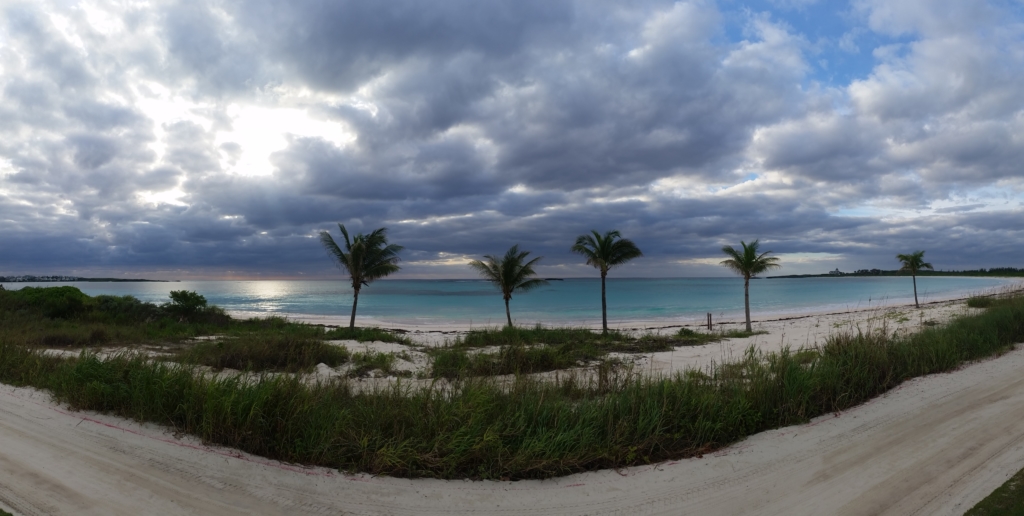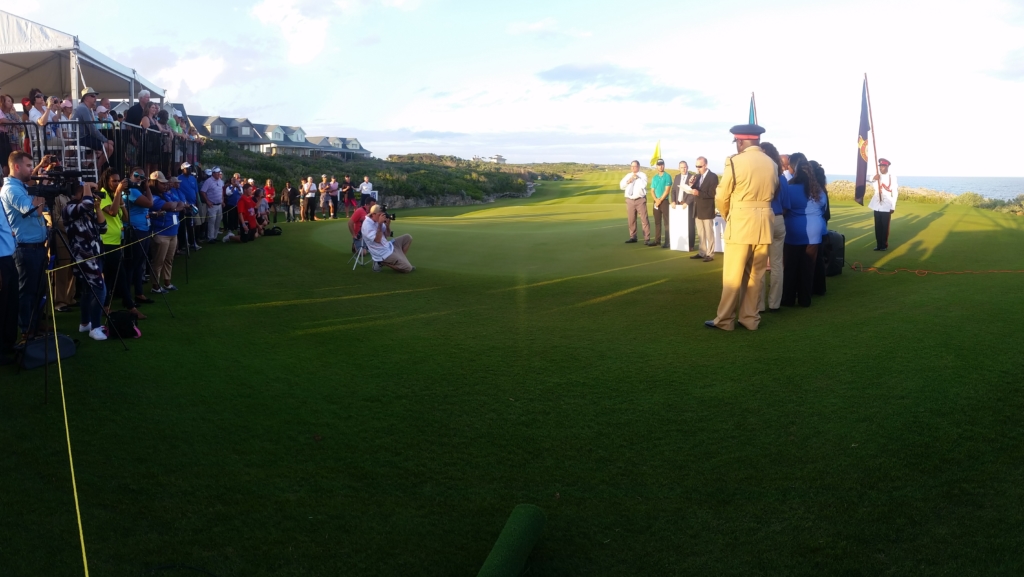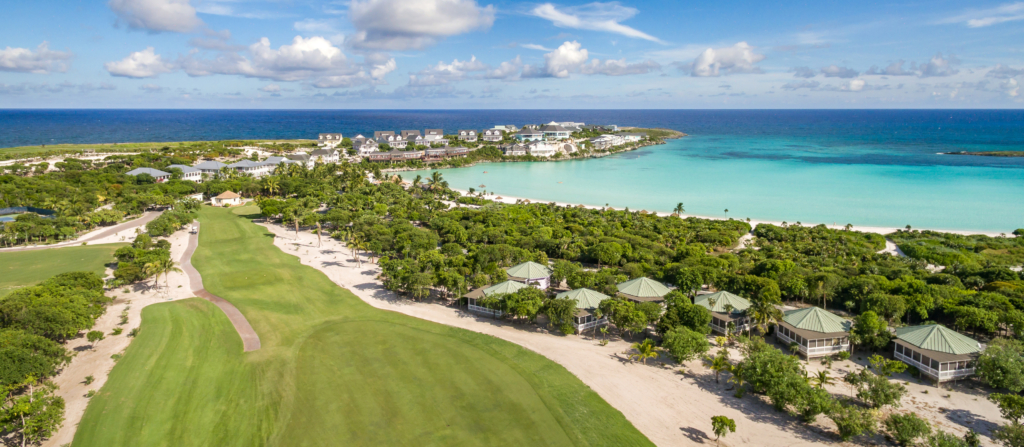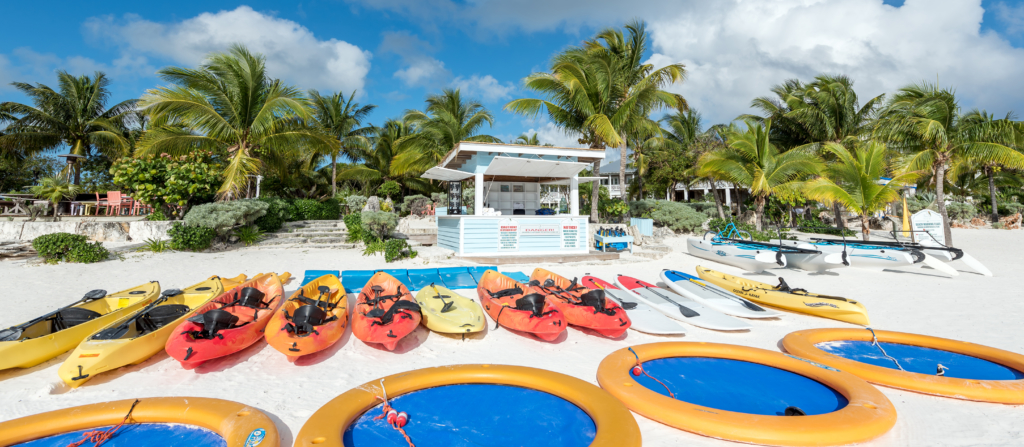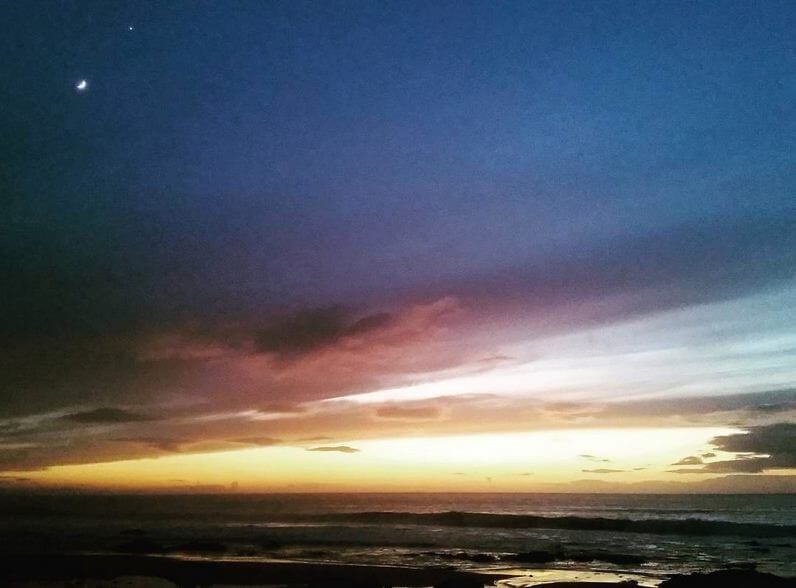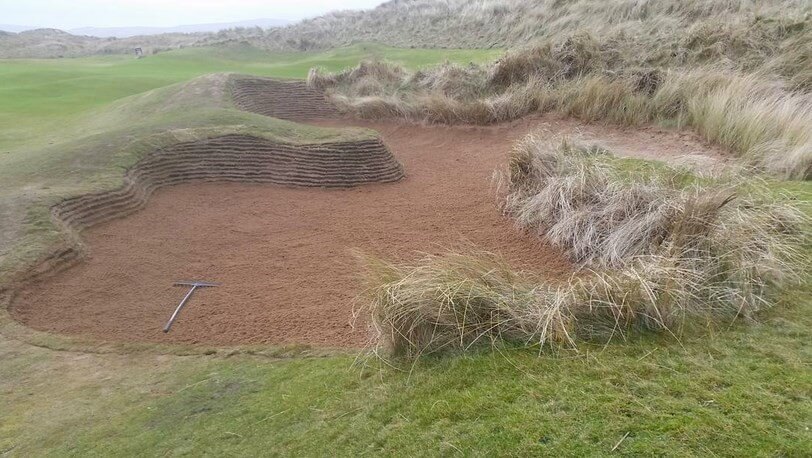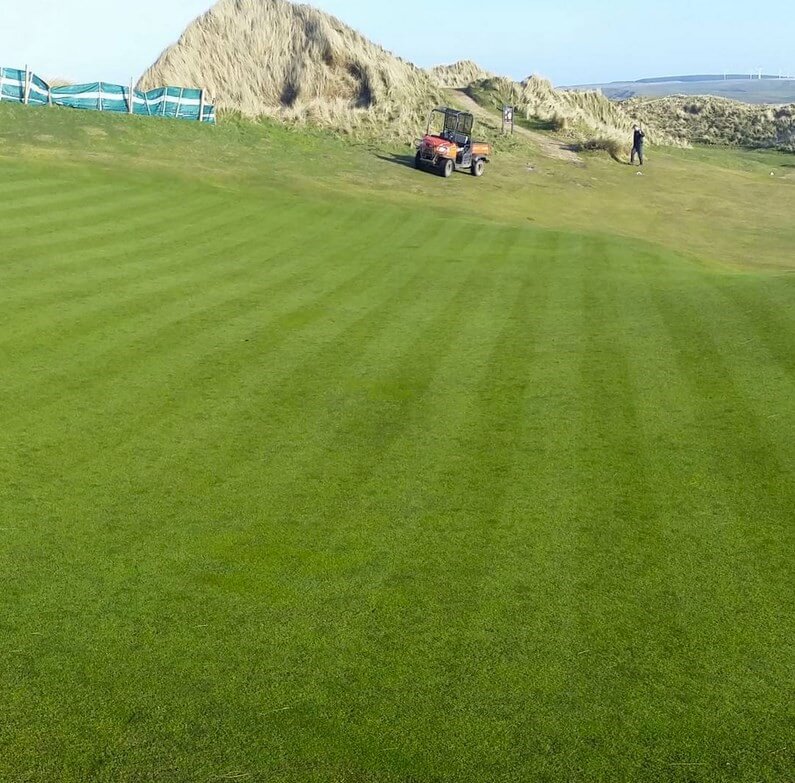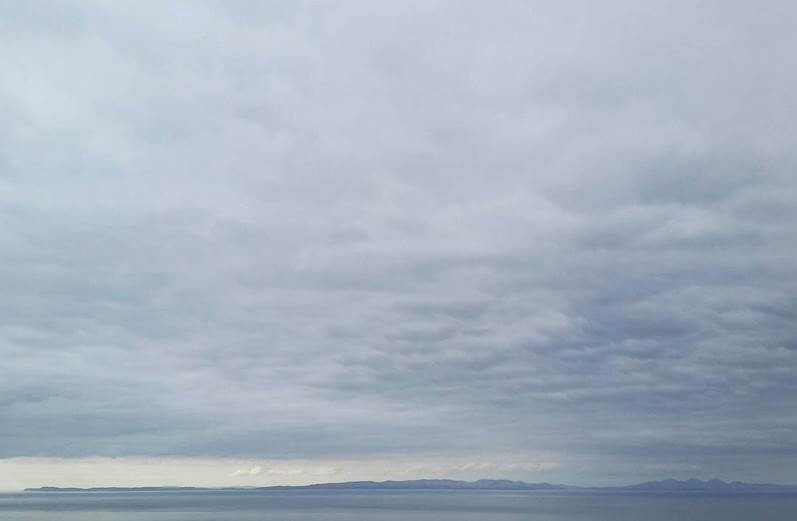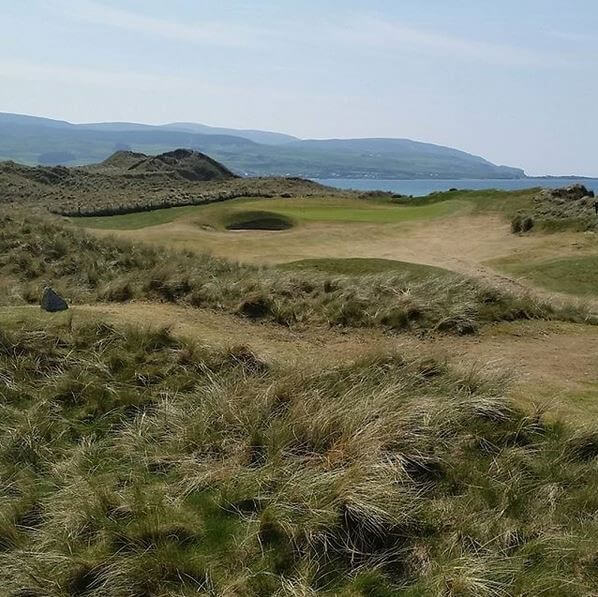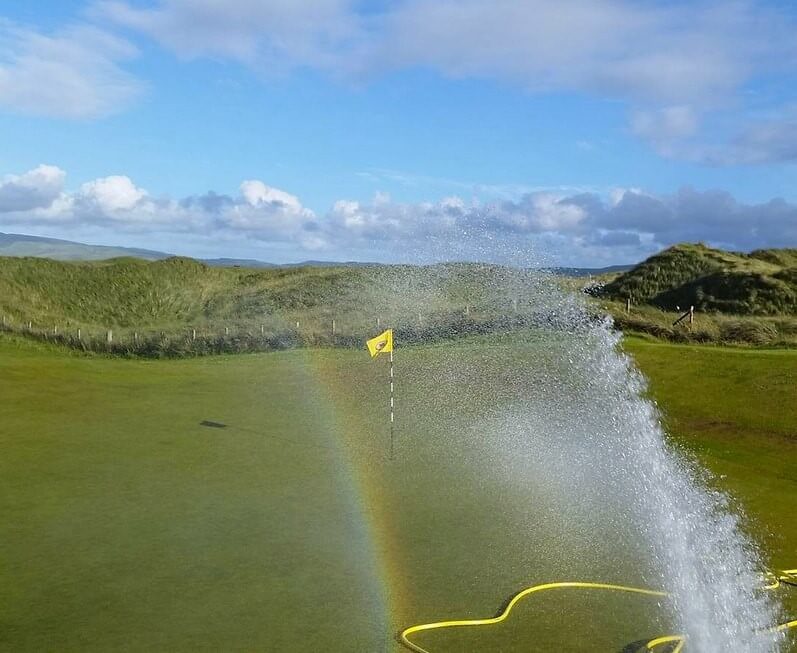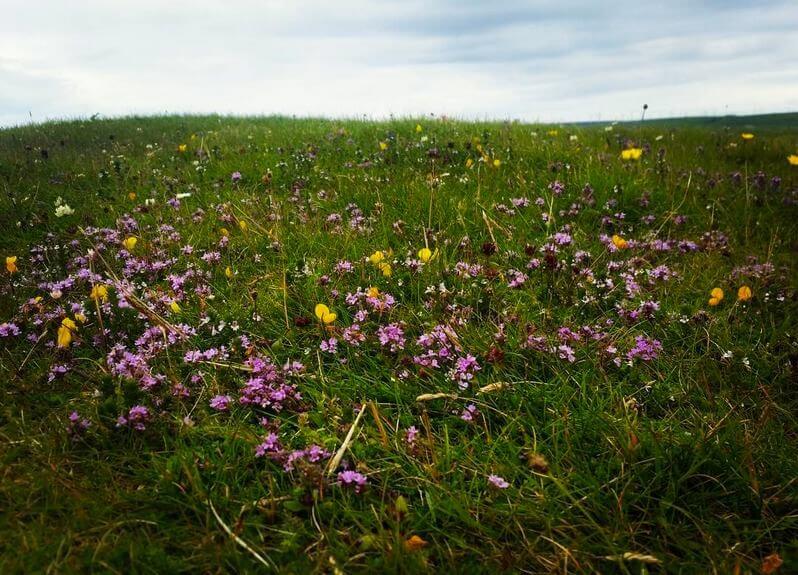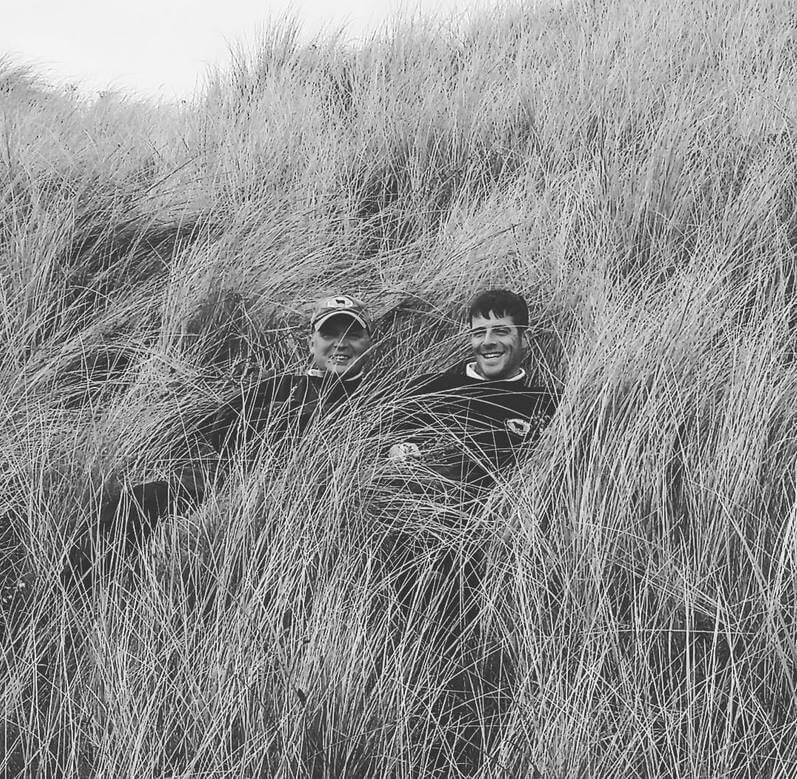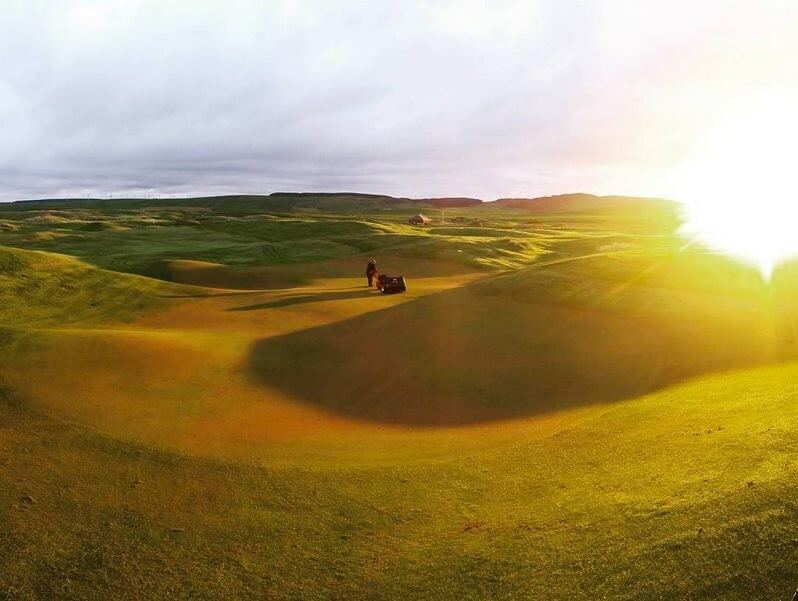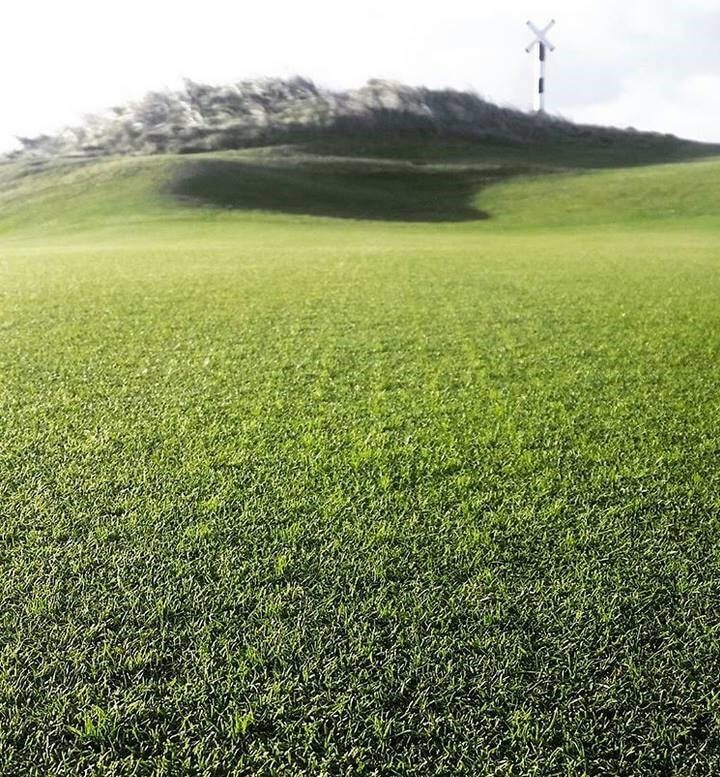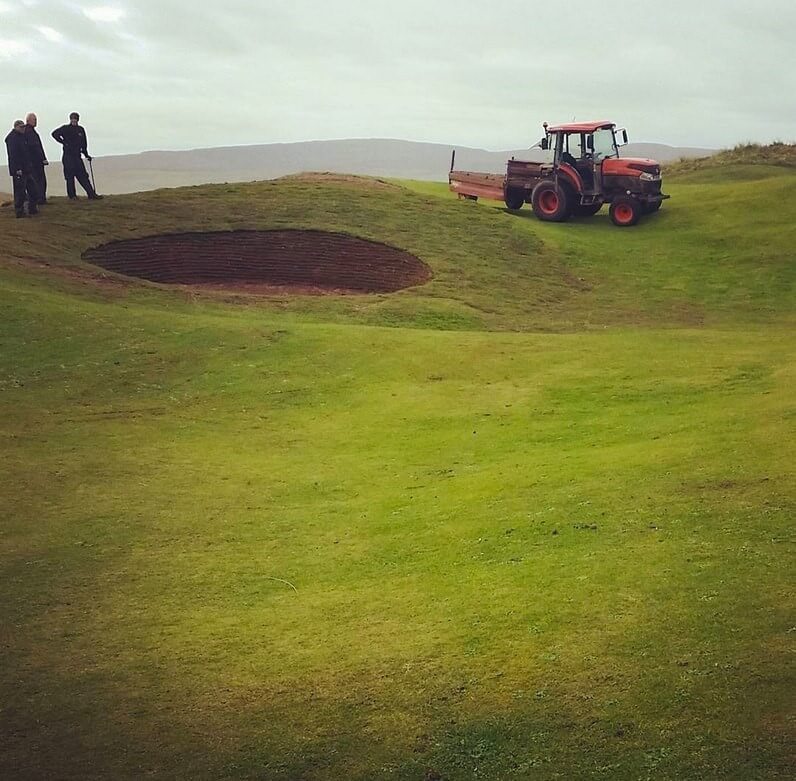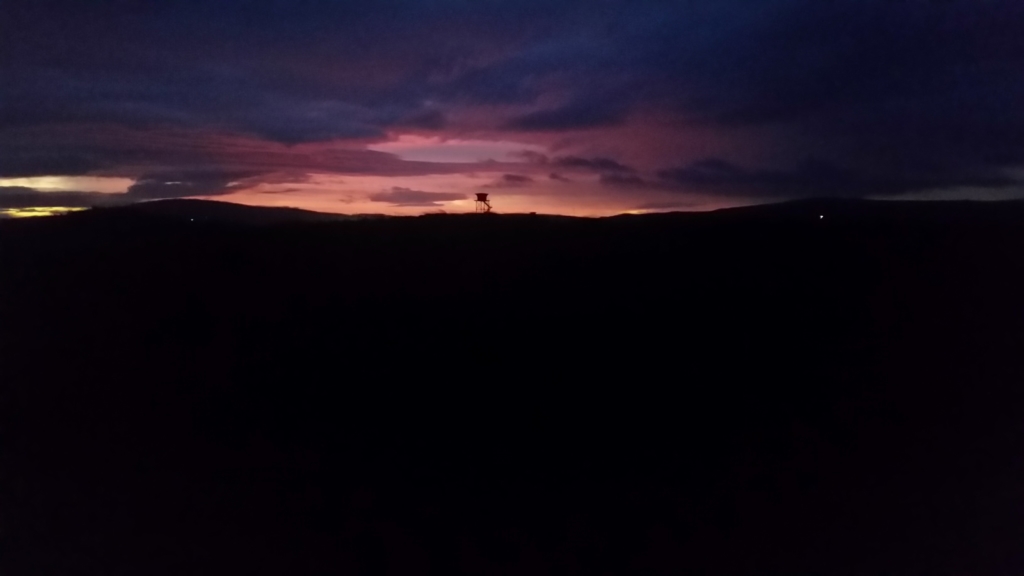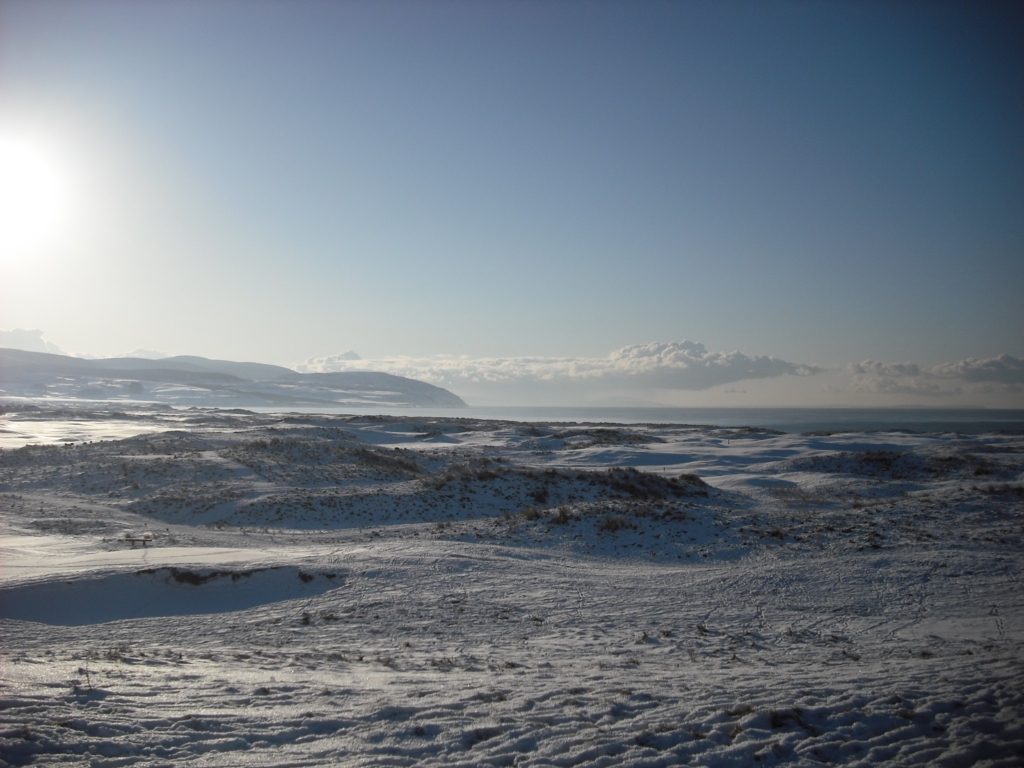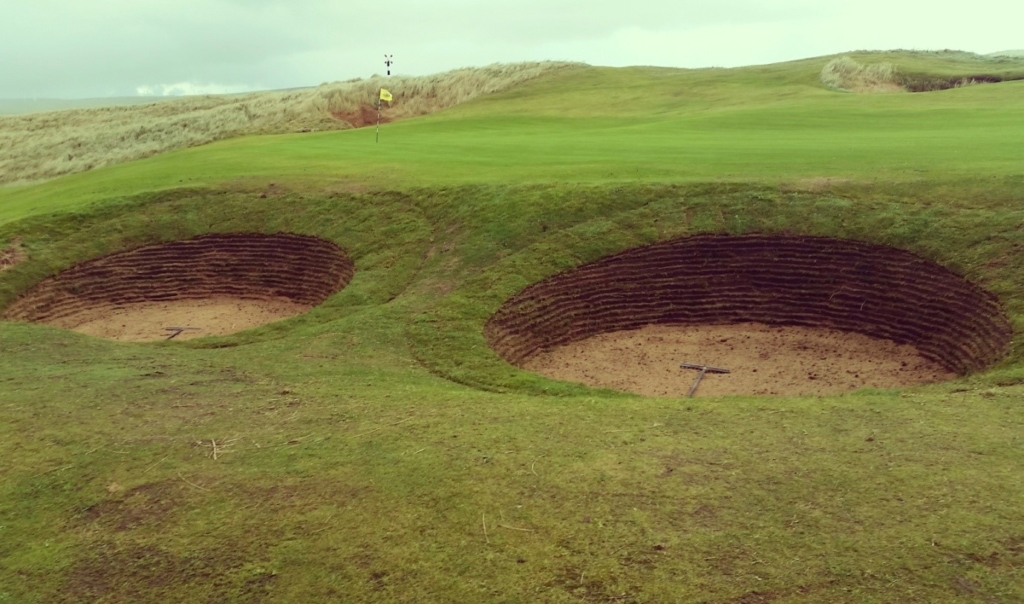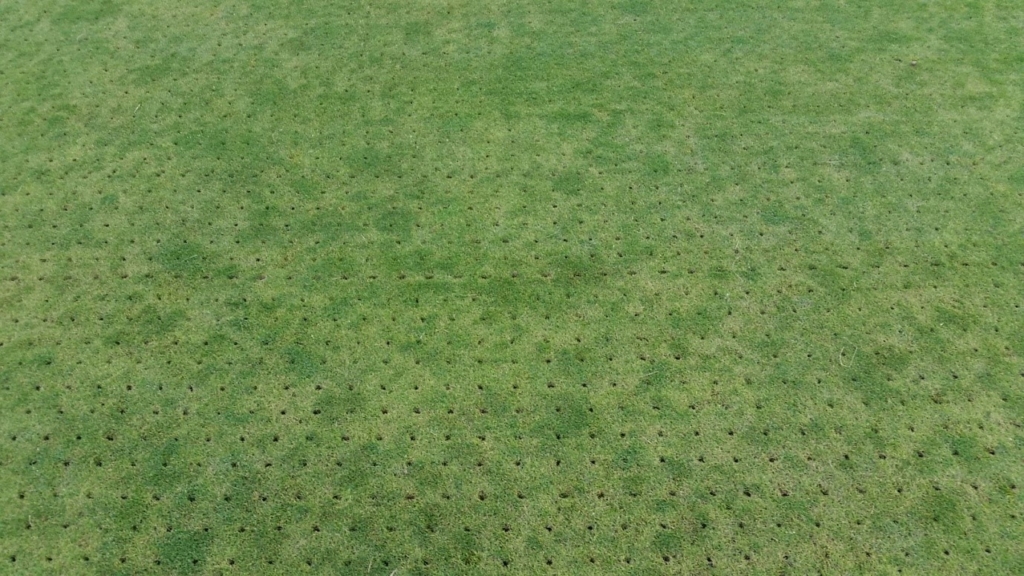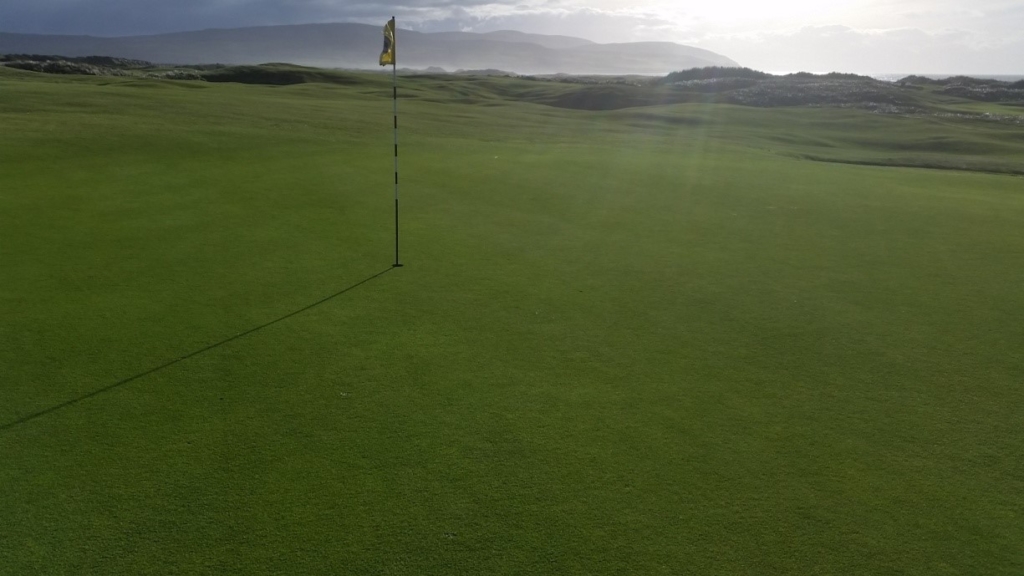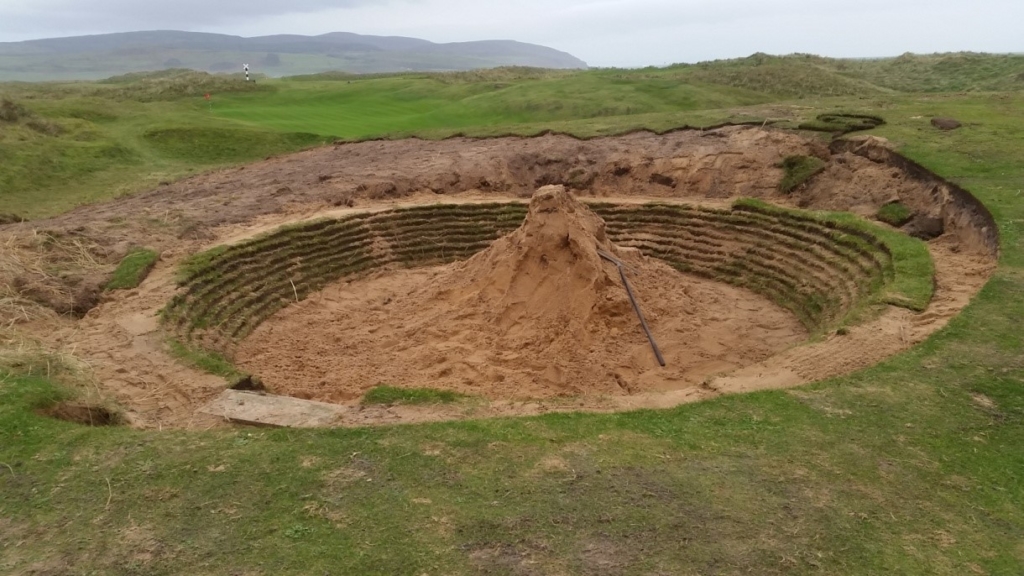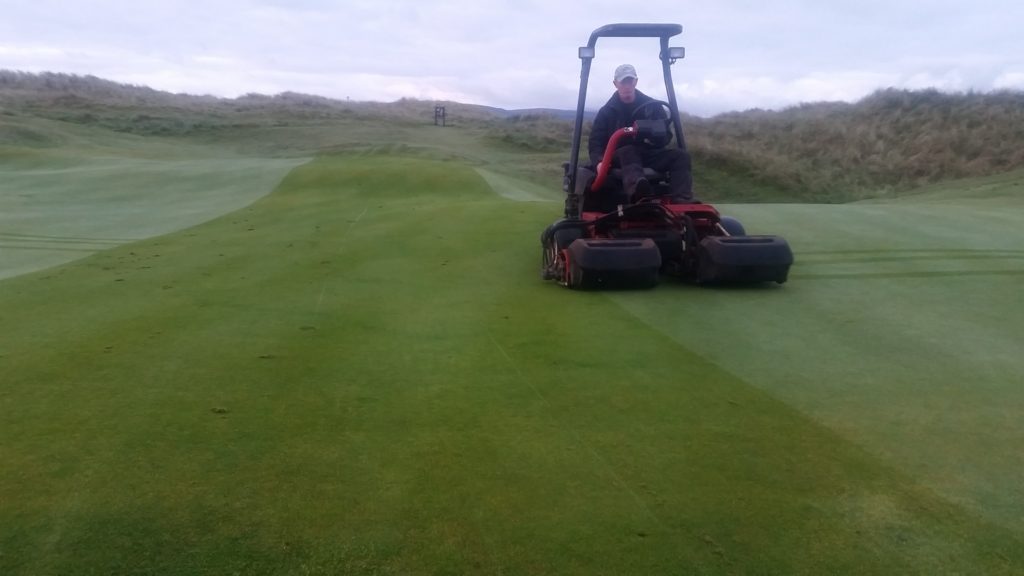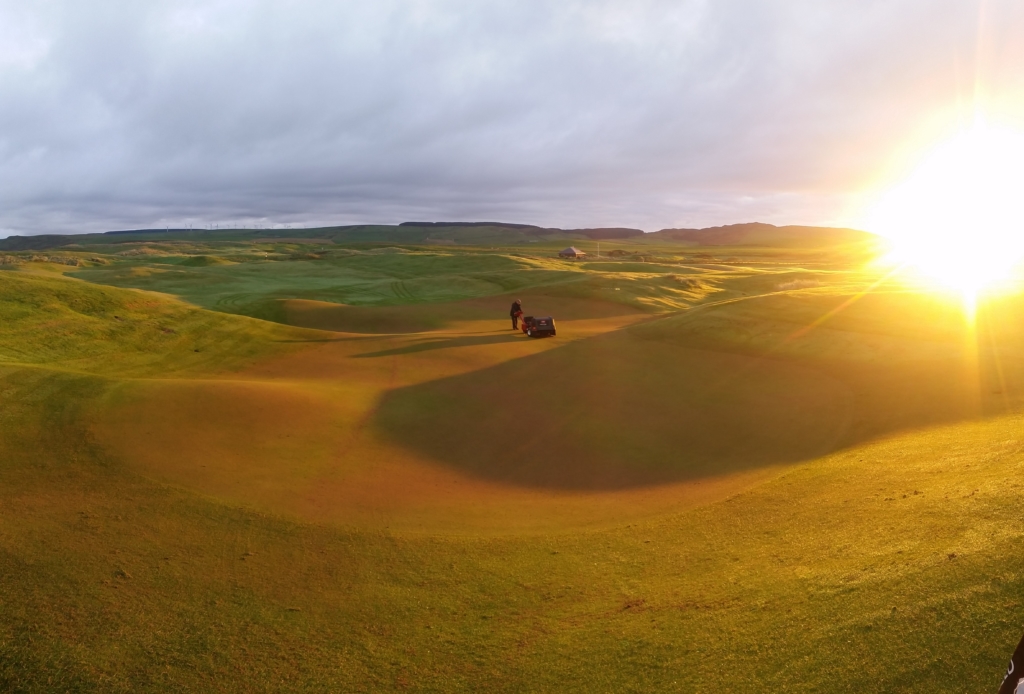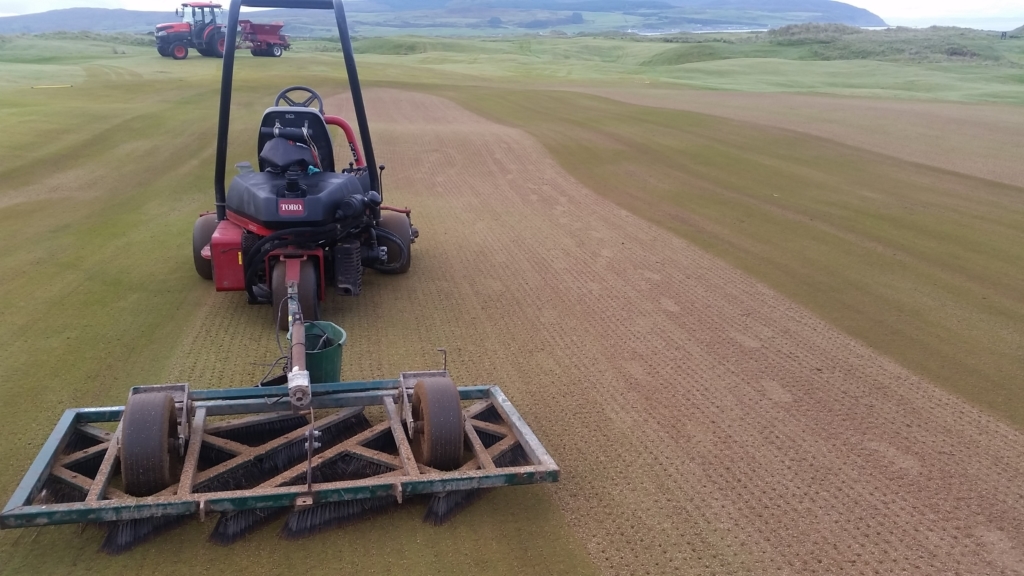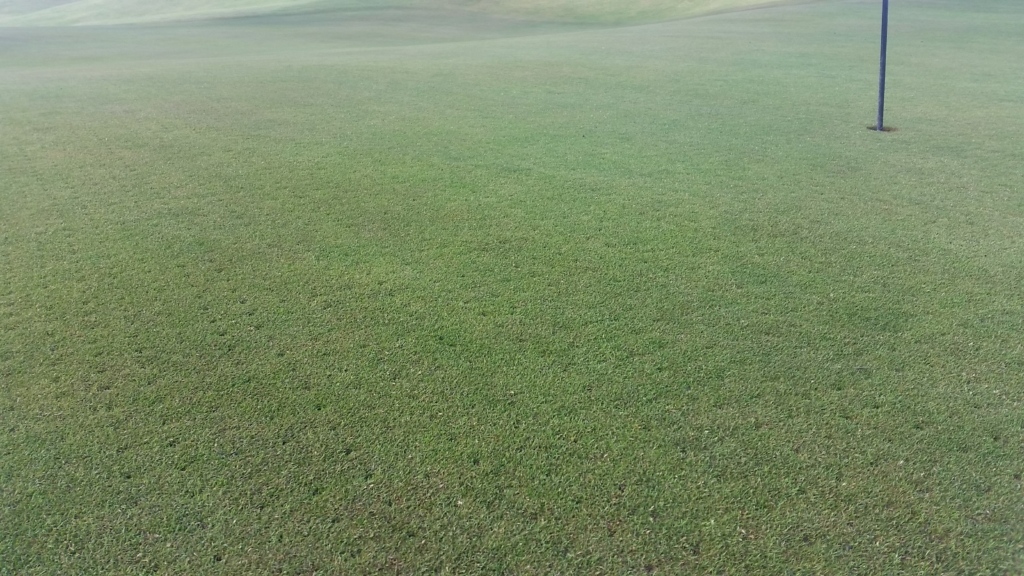Summer is Coming!
This seems to have been a very long winter, and the Greenkeeping squad at Machrihanish Dunes is looking forward to the end of it just as much as I’m sure you are. Considering the battering our site has had this winter, the fine turf surfaces on the golf course actually look pretty healthy at the moment. Our priority now is to retain the grass cover we have and ensure that nutrient levels in the soil and plant leaf are adequate if and when temperatures become sufficiently elevated for growth to become properly activated. The trick at this time of year is always to provide just enough nutrition to allow nature to complete its essential processes in the most efficient manner without promoting lush growth that could produce elongated growth, weaken plants, and encourage disease. The sun has been making fleeting appearances as I write this and when it has poked through the clouds, there is just a little bit of warmth that has not been there before. Even the birds were singing—I haven’t heard that for a while! Hopefully, the old saying will be true and March will go out like a lamb, because it definitely came in like a lion!
Preparing for Tournaments
Although it feels like we are still in the last throes of winter, we are well aware that spring is only a matter of weeks away, and when it does arrive, the competition season will be instantly upon us! Although we have monthly medals all year round, we tend to focus our maintenance towards having the course in peak condition for our “majors”. Somebody asked me recently how far in advance we plan for our biggest competitions, and the truth is that we are always planning for them in some way. Obviously, this effort becomes more focused the week before an event, but I already have a season-long plan written down that should help us to have the course in peak condition for our biggest events.
 Our first tournament this year is a charity four-person Am-Am on April 8th, which serves as a fundraiser for our Kintyre Club charity. We are delighted and extremely appreciative that Glen Scotia Distillery and their parent company, Loch Lomond Group, have agreed to sponsor the prizes for this event, as it maximises the potential for us to raise money- every penny of which will then be re-distributed to worthy causes in the Kintyre area. For those of you who are unfamiliar, this not-for-profit charity was set up by our parent company, Southworth Development, in 2012 and has since donated over £50,000 to—among other things—educational endeavours, junior sports clubs, and musical bands and groups who actively encourage the development of young people. Without the backing of local charities and organisations such as the Kintyre Club, it would be impossible for some of these clubs and organisations that support and encourage our young people to survive. In many cases, grants backed by local and national government funding that would have been relatively easy to access in years gone by have now dried up completely, and charity funding is one of the few avenues that the hard-working organisers of these clubs and ventures have left available to them. Writing these updates gives me the opportunity to appeal to its readers on a monthly basis, so please give serious thought to participating in this event if you possibly can- least of all because a four-person Am-Am at Machrihanish Dunes will be brilliant fun and a great way to start our competitive season, but also because every penny of the money we raise on the day will be redistributed to worthy causes in our own community.
Our first tournament this year is a charity four-person Am-Am on April 8th, which serves as a fundraiser for our Kintyre Club charity. We are delighted and extremely appreciative that Glen Scotia Distillery and their parent company, Loch Lomond Group, have agreed to sponsor the prizes for this event, as it maximises the potential for us to raise money- every penny of which will then be re-distributed to worthy causes in the Kintyre area. For those of you who are unfamiliar, this not-for-profit charity was set up by our parent company, Southworth Development, in 2012 and has since donated over £50,000 to—among other things—educational endeavours, junior sports clubs, and musical bands and groups who actively encourage the development of young people. Without the backing of local charities and organisations such as the Kintyre Club, it would be impossible for some of these clubs and organisations that support and encourage our young people to survive. In many cases, grants backed by local and national government funding that would have been relatively easy to access in years gone by have now dried up completely, and charity funding is one of the few avenues that the hard-working organisers of these clubs and ventures have left available to them. Writing these updates gives me the opportunity to appeal to its readers on a monthly basis, so please give serious thought to participating in this event if you possibly can- least of all because a four-person Am-Am at Machrihanish Dunes will be brilliant fun and a great way to start our competitive season, but also because every penny of the money we raise on the day will be redistributed to worthy causes in our own community.
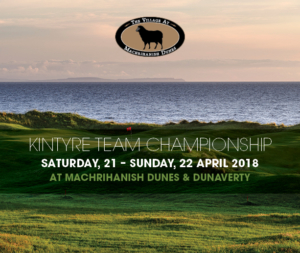 Our second four-person team event is the Kintyre Team Championship, run in conjunction with Dunaverty Golf Club over the weekend of 21st-22nd April. This competition has become a firm favourite since its inception in 2015 and comprises a 2-ball better ball competition at Dunaverty on Saturday followed by an individual Stableford at Machrihanish Dunes on Sunday, with 3 of the 4 individual scores counting towards the team total. In my opinion, the popularity of this tournament stems from its diversity—it has facets of individual, pairs, and team play which maximises the potential for competition between the teams and also between the individuals who make them up. It is great fun.
Our second four-person team event is the Kintyre Team Championship, run in conjunction with Dunaverty Golf Club over the weekend of 21st-22nd April. This competition has become a firm favourite since its inception in 2015 and comprises a 2-ball better ball competition at Dunaverty on Saturday followed by an individual Stableford at Machrihanish Dunes on Sunday, with 3 of the 4 individual scores counting towards the team total. In my opinion, the popularity of this tournament stems from its diversity—it has facets of individual, pairs, and team play which maximises the potential for competition between the teams and also between the individuals who make them up. It is great fun.
By the time these two tournaments have been contested, the summer season will be well underway. The Shepherd’s Cross, run in conjunction with Machrihanish Golf Club, will be held on Sunday, June 17th. As regular competitors will know, this long-established team event is played over the first 9 holes at Machrihanish, before competitors cross the fence to play a composite “back nine” at Machrihanish Dunes.
 Hot on the heels of the Shepherd’s Cross comes our flagship event, the Campbeltown Open. Although it is primarily a 36-hole stroke-play tournament, the Campbeltown Open is multi-faceted, running side by side with two other events:
Hot on the heels of the Shepherd’s Cross comes our flagship event, the Campbeltown Open. Although it is primarily a 36-hole stroke-play tournament, the Campbeltown Open is multi-faceted, running side by side with two other events:
- the 18-hole Ladies’ Campbeltown Open, an eclectic competition which keeps scoring interesting for those players who could have done better in their first round, and
- a Junior Drive, Chip, and Putt Competition which provides an excellent and fun introduction to golf competition for local children.
With a barbeque running, Peter’s legendary soup flowing freely, and entertainment planned for the Saturday evening, Campbeltown Open weekend has a gala atmosphere and is not to be missed.
In all honesty, we have struggled to find a formula for our Club Championship that suits everybody. This year, we have elected to run this members-only event over the weekend of 28th-29th July, with 18 holes stroke-play each day. We cannot think of a better way to decide this most prestigious of club tournaments without making it virtually impossible for members who live outside of Kintyre to compete, and we believe it is imperative to the continued growth of the Club to ensure that as many members as possible are given the opportunity to compete in the Club Championship regardless of where they are based. We will review the success of this format after this year’s tournament, and as always, we welcome your input and ideas on how we can improve these events in the years to come.
 The Black Sheep Open has become one of our most popular events, which we are delighted about because it is actually very simple to run! An 18-hole Stableford Open is the most friendly and least attritional way to decide a golf tournament and I think this helps to promote the friendly, relaxed atmosphere that surrounds the competition. Maybe this is the key to promoting a successful event—make it inclusive for everybody, fun to play in, and ensure that everybody can return a score regardless of how difficult those nasty greenkeepers set the course up to play!
The Black Sheep Open has become one of our most popular events, which we are delighted about because it is actually very simple to run! An 18-hole Stableford Open is the most friendly and least attritional way to decide a golf tournament and I think this helps to promote the friendly, relaxed atmosphere that surrounds the competition. Maybe this is the key to promoting a successful event—make it inclusive for everybody, fun to play in, and ensure that everybody can return a score regardless of how difficult those nasty greenkeepers set the course up to play!
After the winter we are just emerging from, it pains me to even mention the end of a golf season, but for us, that is what the Autumn Pairs signifies. One of Machrihanish Dunes’ longest-running events, the Autumn Pairs Open will be run this year in conjunction with our popular members’ awards evening. This would be an ideal opportunity to plan an overnight stay and enjoy some semi-competitive golf, excellent food, and whatever interactive entertainment we decide to set up for you to participate in this year. Darts could feature again. Nearly everyone loves the darts! Maybe a quiz? Some music? I don’t know for sure yet but I’ll put my thinking cap on and I am definitely open to suggestions!
I don’t know about you, but I am really looking forward to preparing for and helping to run these tournaments in 2018. It would be a monotonous existence for a greenskeeper if he had no tournaments to prepare for, but a packed schedule such as this gives us just the right number of peaks to aim for.
If any of these tournaments appeal to you and you want more information than I have supplied here, please phone Lorna on 01586810067, email her at golfhouse@machdunes.com, or fill out this form.
The Club Championship and the Shepherd’s Cross are the only member-only events we run, and we welcome anybody with a recognised handicap to enter any or all of our other events. All of our golf events are designed to include gents, ladies, and juniors and we actively encourage everybody to take part. Many of these events are also run in conjunction with evening entertainment at The Ugadale Hotel, and a discounted competitor’s rate is quite often available should potential entrants wish to stay in either of our hotels or our cottages. The best way to make yourself aware of just what is on offer is to phone us and ask. Our reservations team is armed with all the information you could ever need and is willing and ready to put together a package that suits your specific needs. Accommodations for the dates of these competitions do sell out quite quickly, so my advice if you are keen on taking advantage of these offers would be to make contact as early as you possibly can.
Enjoy your golf in March. Hopefully, the weather will take a turn for the better!
